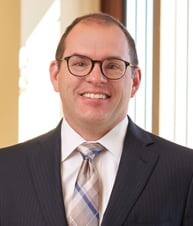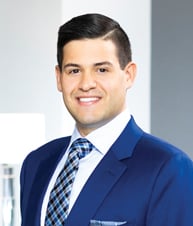A weekly summary of the precedential patent-related opinions issued by the Court of Appeals for the Federal Circuit and the opinions designated precedential or informative by the Patent Trial and Appeal Board.
DePuy Synthes Products, Inc. v. Medidea, L.L.C., No. IPR2018-00315 (Jan. 23, 2019) (designated precedential on Mar. 18, 2019). Opinion by Woods, joined by Ippolito and Marschall.
In an IPR proceeding, the Patent Owner requested that the inventor be permitted to address the panel at the oral hearing. The Patent Trial and Appeal Board denied the request because the inventor “did not provide any declaration evidence in this proceeding and he is not otherwise listed as a counsel of record,” and therefore any testimony by the inventor “would be new evidence and forbidden under our Trial Practice Guide.”
K-40 Electronics, LLC v. Escort, Inc., No. IPR2013-00203 (May 21, 2014) (designated precedential on Mar. 18, 2019). Opinion by Giannetti, joined by Perry and Ward.
While recognizing that live testimony at an oral hearing “will be necessary only in limited circumstances,” to be considered “on a case-by-case basis,” the Patent Trial and Appeal Board granted the Patent Owner’s motion to present live testimony from the inventor at the oral hearing.
The Board explained that it “may occasionally require live testimony where the Board considers the demeanor of a witness critical to assessing credibility.” In this case, the inventor had provided declaration testimony as a fact witness, attempting to antedate the only two references relied on by the Petitioner, making his testimony potentially case-dispositive. The Board explained that one of the factors for considering live testimony includes “the importance of the witness’s testimony to the case, i.e., whether it may be case-dispositive.” The Board thus permitted the testimony, limited to the scope of the inventor’s direct testimony submitted via declaration, and allowing “only cross-examination and redirect.” The Board noted that if the inventor appears to change his direct testimony, “he may be impeached with his prior testimony.”
Amazon.com, Inc., et al. v. Uniloc Luxembourg S.A., No. IPR2017-00948 (Jan. 18, 2019) (designated precedential on Mar. 18, 2019). Opinion by McKone, joined by Parvis and Wormmeester.
In an IPR proceeding, the Patent Owner filed a contingent motion to amend, proposing substitute claims in the event that the Board found certain challenged claims to be unpatentable. The Board then found the challenged claims unpatentable, and subsequently considered and denied the motion to amend. According to the Board, the proposed substitute claims were directed to non-statutory subject matter under 35 U.S.C. § 101 and as such were unpatentable.
The Patent Owner sought rehearing, arguing that the Board may consider only 35 U.S.C. § 102 and § 103 as to substitute claims. The Board disagreed. While 35 U.S.C. § 311(b) “limits a petitioner to requesting cancellation of existing claims of a patent only under § 102 and § 103,” it does not limit the grounds that can be raised in response to proposed substitute claims. “In contrast to § 311(b), the statutory provision providing a right to a motion to amend, 35 U.S.C. § 316(d), does not prevent [the Board] from considering unpatentability under sections other than § 102 and § 103 with respect to substitute claims.” The Board found this approach to be consistent with the Board’s existing practice of relying on other provisions, including § 112, when evaluating amended claims for unpatentability.
Ex parte Smith, et al., Appeal No. 2018-000064 (Feb. 1, 2019) (designated informative on Mar. 19, 2019). Opinion by Bennett, joined by Barry. Dissenting opinion by Bui.
Applying the USPTO’s January 7, 2019 revised guidance on the application of 35 U.S.C. § 101, the Patent Trial and Appeal Board reversed an Examiner’s final rejection of certain claims under § 101.
Under the USPTO’s guidance, the Board “first look[s] to whether the claim recites: (1) any judicial exceptions, including certain groupings of abstract ideas . . . and (2) additional elements that integrate the judicial exception into a practical application.” The Board explained that, “[o]nly if a claim (1) recites a judicial exception and (2) does not integrate that exception into a practical application, do we then look to whether the claim: (3) adds a specific limitation beyond the judicial exception that is not ‘well-understood, routine, conventional’ in the field . . . . or (4) simply appends well-understood, routine, conventional activities previously known to the industry, specified at a high level of generality, to the judicial exception.”
Applying that guidance, the Board concluded that the Examiner erred in rejecting the claims as being directed to patent-ineligible subject matter. The claims under consideration concerned a hybrid trading system for concurrently trading securities or derivatives through both electronic and open-outcry trading mechanisms. The Board first determined that the claims “recite a judicial exception of a fundamental economic practice.” The Board next found, however, that certain claim limitations relating to specific timing mechanisms served to “integrate the recited judicial exception of derivative training into a practical application.” The Board thus concluded that the claims are patent eligible because they are “not directed to the recited judicial exception,” but instead are “integrated into a practical application.”
Judge Bui dissented, disagreeing that the claims integrate the judicial exception of derivative trading into a practical application. In Judge Bui’s view, the claimed timing features “are not technical in nature and do not provide any technical solution to a technical problem,” and as such the claims are not patent eligible under § 101.
SRI Int’l, Inc. v. Cisco Systems, Inc., No. 2017-2223 (Fed. Cir. (D. Del.) Mar. 20, 2019). Opinion by Stoll, joined by O’Malley. Dissenting opinion by Lourie.
A jury found that Cisco willfully infringed two SRI patents and awarded a 3.5% reasonable royalty for a total of $23,660,000 in compensatory damages. After post-trial briefing, the district court upheld the willfulness finding, doubled the damages award, and granted SRI’s motion for attorneys’ fees, compulsory license, and prejudgment interest. Cisco appealed the district court’s claim construction and denial of summary judgment of patent ineligibility under 35 U.S.C. § 101, as well as the court’s grant of summary judgment of no anticipation, enhanced damages, attorneys’ fees, and ongoing royalties. The Federal Circuit affirmed-in-part, vacated-in-part, and remanded.
First, the Federal Circuit upheld the district court’s determination of patent eligibility under § 101, ruling that under step one of the Alice framework, the claims were not directed to an abstract idea. Instead, “the claims are more complex than merely reciting the performance of a known business practice on the Internet and are better understood as being necessarily rooted in computer technology in order to solve a specific problem in the realm of computer networks.”
Second, the Federal Circuit adopted the district court’s construction of the claim term “network traffic data” to mean “data obtained from direct examination of network packets.” The Federal Circuit explained that Cisco’s alternative construction went “too far in limiting the amount of preprocessing encompassed by the claim,” and that SRI had not disclaimed preprocessing during reexamination of the patents.
Third, the Federal Circuit upheld the district court’s sua sponte grant of summary judgment of no anticipation, concluding that the prior art “does not expressly disclose directly examining networking packets as required by the claims—especially not to obtain data about network connection requests.” The Federal Circuit also saw no error in the sua sponte nature of the district court’s order because “Cisco was on notice that anticipation was before the court, and Cisco had the opportunity to put forth its best evidence.”
Fourth, the Federal Circuit determined that substantial evidence did not support the jury’s willfulness finding. Cisco did not know of SRI’s patent until SRI sent a May 8, 2012 notice letter—years after Cisco had independently developed and first sold the accused systems. As such, the jury’s verdict of willful infringement before May 8, 2012 was not supported by substantial evidence. The Federal Circuit thus vacated both the denial of Cisco’s post-trial motion of no willful infringement and the district court’s award of enhanced damages, and remanded for further consideration.
Next, the Federal Circuit ruled that the district court did not abuse its discretion in finding the case exceptional and awarding attorneys’ fees pursuant to 35 U.S.C. § 285. The Federal Circuit vacated and remanded the award solely for a recalculation by removing “attorney hours clearly included by mistake.” Finally, the Federal Circuit determined that the district court did not abuse its discretion in awarding a 3.5% ongoing royalty.
Judge Lourie dissented from the majority’s decision upholding the eligibility of the claims. In Judge Lourie’s view, “they are clearly abstract,” differing “very little” from the claims determined to be abstract in Electric Power Group, LLC v. Alstom S.A., 830 F.3d 1350, 1355 (Fed. Cir. 2016). He explained that “[t]he claims here recite nothing more than deploying network monitors, detecting suspicious network activity, and generating and handling reports.”

